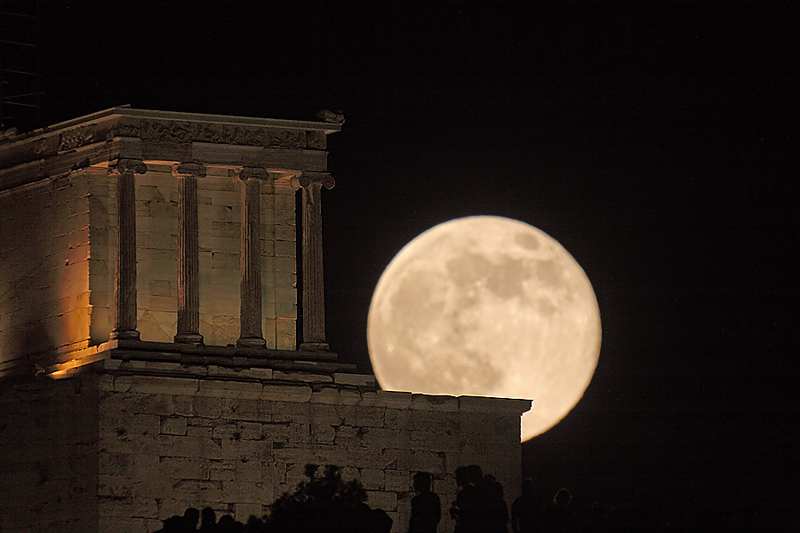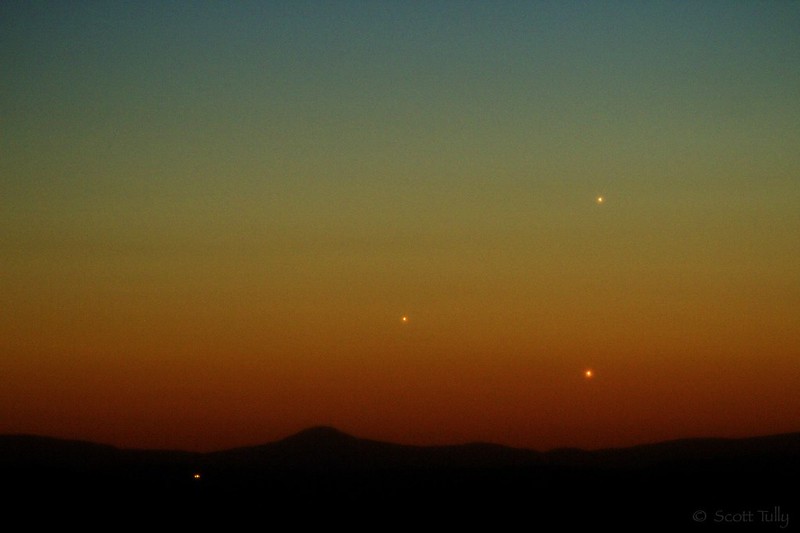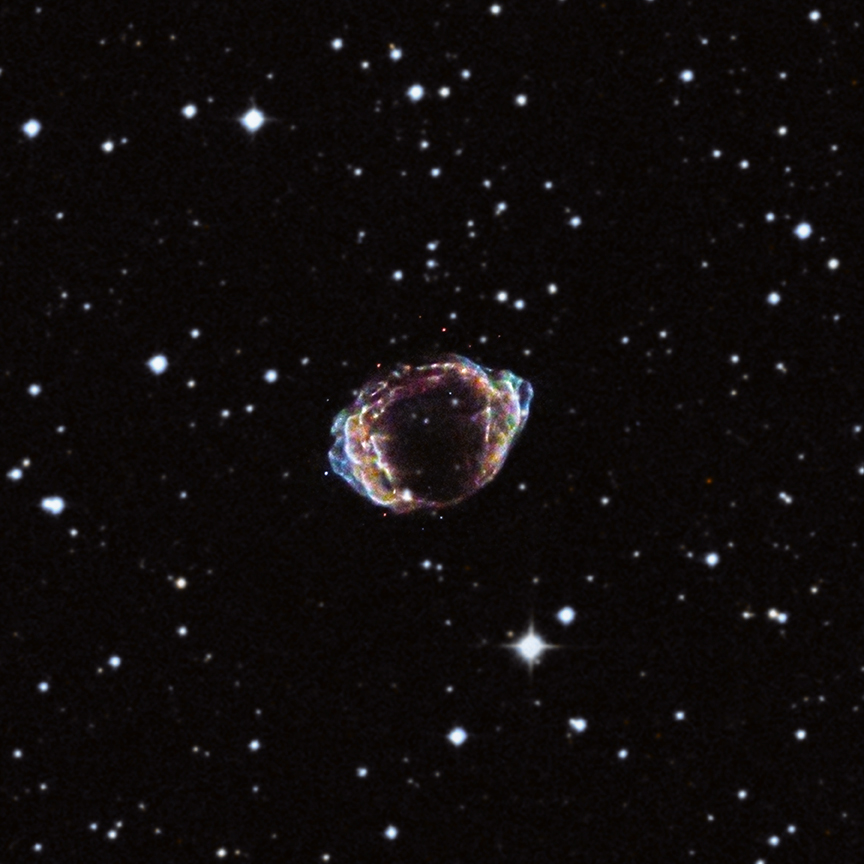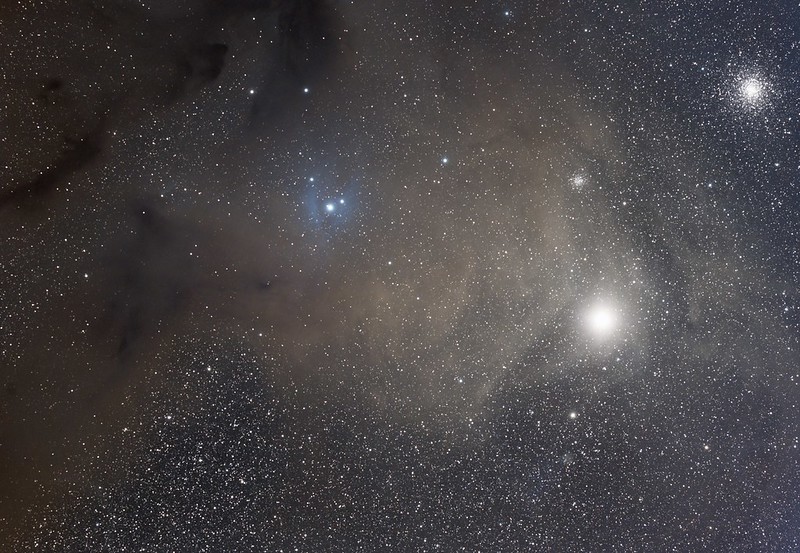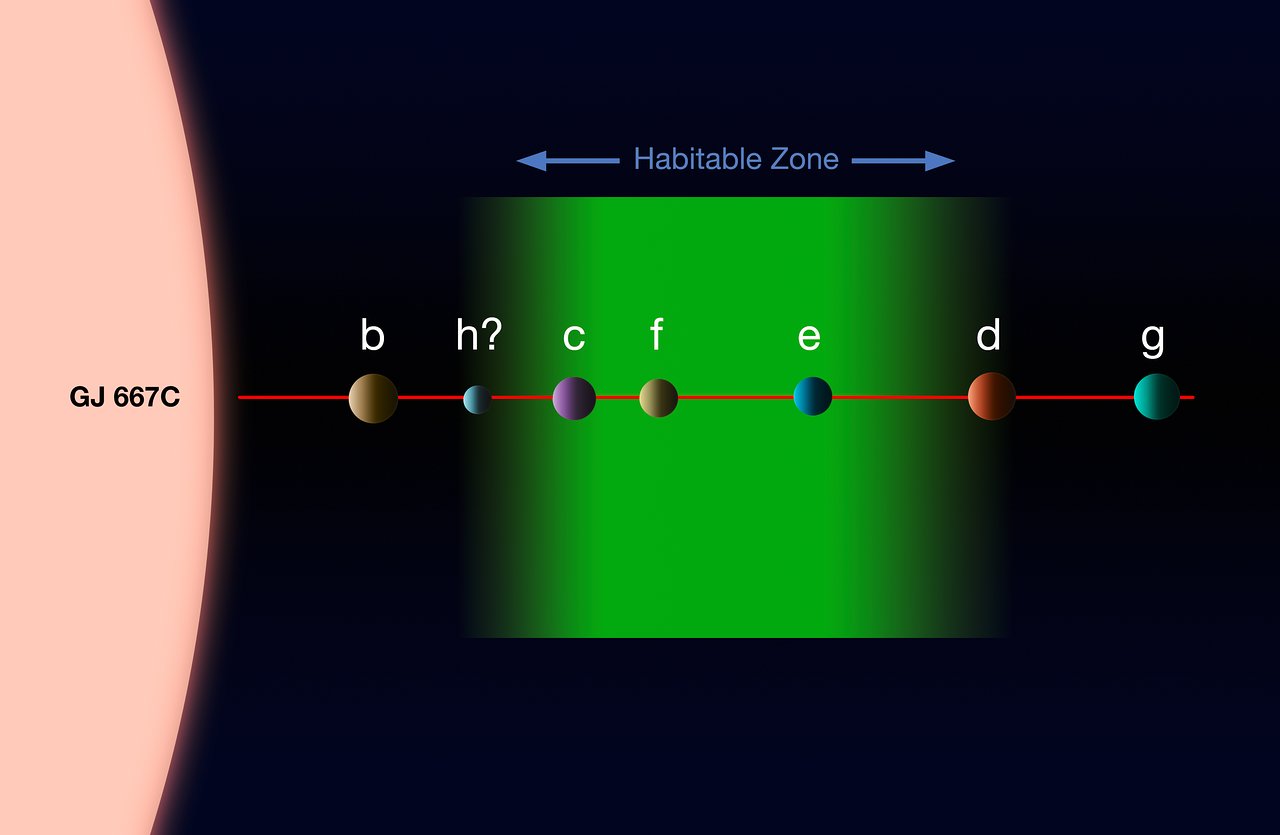This image shows the ring nebula together with its very faint halo as imaged by 11″, 12″ and 17″ reflectors during over 100 hours of observation time.
Credit:
André van der Hoeven,
Terry Hancock,
Fred Herrmann, Mike van den Berg and Mathijn Ippel
Full resolution
Like other old red giants M57, better known as the Ring nebula, has expelled most of its material in the form of hydrogen and oxygen. At its core lies the white dwarf remnant which consists mainly of carbon. The lighter hydrogen forms the outer reddish envelope while the heavier blue-green oxygen remains about the core. The gases in the expanding shell are illuminated by the radiation of the central white dwarf who’s glow is still 200 times brighter than our Sun.
When we look closely we see that M57 consists of three structures, the inner, bright and most familiar, nebula, which is about 86″ by 62″. This is surrounded by a second fainter halo ranging until about 156″ x 136″ from the central star. Surrounding these two there is a very faint third halo of about 3,8′ diameter. The brightnesses of these three halos differ a lot, the second ring being about 5x (2 magnitudes) fainter than the central ring, and the outermost being almost 5000x fainter than the central ring (>9 magnitudes fainter…).
Observation
The huge difference in brightness makes it very difficult to observe the halos. Using data from a C11 and two 12″ RC telescopes about 40 hours of data was gathered using narrowband h-alpha filters (3 and 5 nm) to lift the halo out of the background noise during a period of over 2 years (2011-2013). The barred spiral galaxy IC 1296 is also visible in the upper part of the image. IC 1296 distance is estimated to be 220 million light years.
This image was done as a collaboration by myself, Terry Hancock in Michigan, USA, Fred Herrmann from Alabama, USA, Mike van den Berg from the Netherlands and Mathijn Ippel from the Netherlands.
Setups:
André: Celestron C11 with SXV-H9
Fred: Astro-tech 12″ RC with SBIG STT-8300
Terry: Astro-tech 12″ RC with QHY-9
Mathijn: Planewave 12,5″ with SBIG ST-11000
Mike: Planewave 17″ with SBIG ST-11000
Total exposures used:
H-alpha 1800s: 40x (André), 20x (Terry), 36x (Mike), 3600s: 4x (André), 5x (Fred)
RGB Red 16x 10 min (Terry), 11x 30 min (Mathijn), Green 12 x 10 min (Terry), 11x 30 min (Mathijn), Blue 11x 10 min (Terry), 9x 30 min (Mathijn)
Luminance 8x 15 min (Terry), 39x 30 min (Mike)
Total exposure time: 104 hours
The inner halo around M57 was only discovered in 1935 by J.C. Duncan using a 30 min image with the 2,5 m Hooker telescope.
The outer most halo was only discovered in 1987 using a telescope in Mexico.
This image shows what can be done be amateurs nowadays compared to the multi-billion Hubble Telescope combined with the 8.2 m Subaru telescope in Hawaii. It clearly shows what progress astrophotography has made in the past decades, if you consider that the outer halo wasn't observed before 1987...


